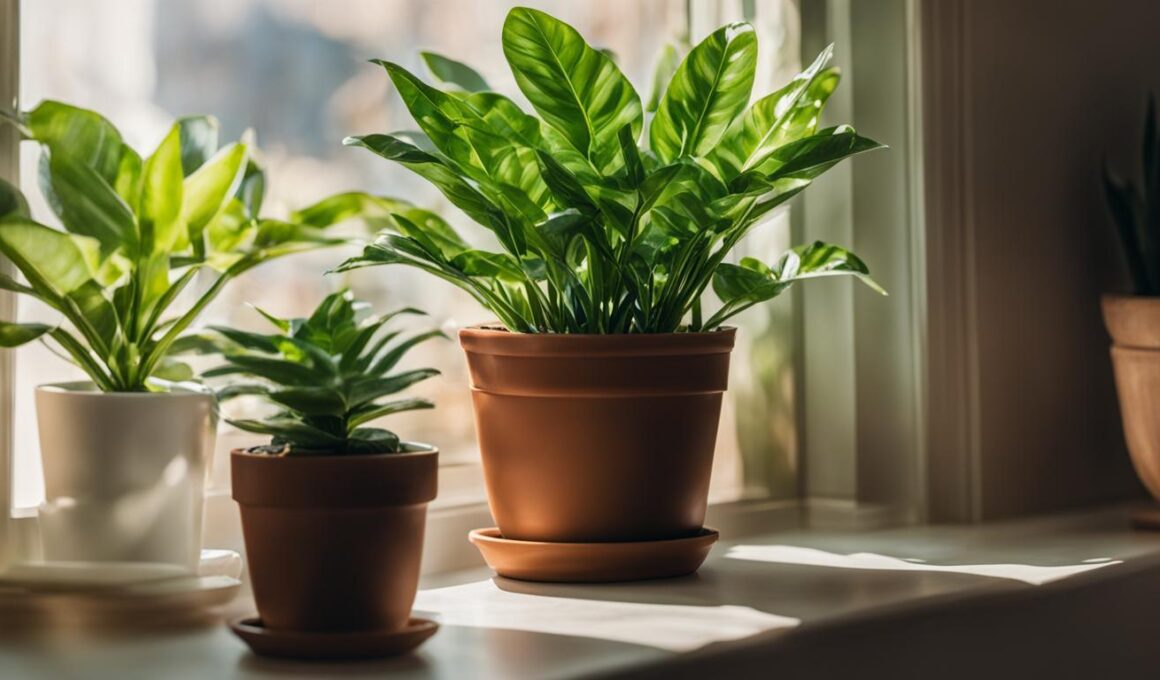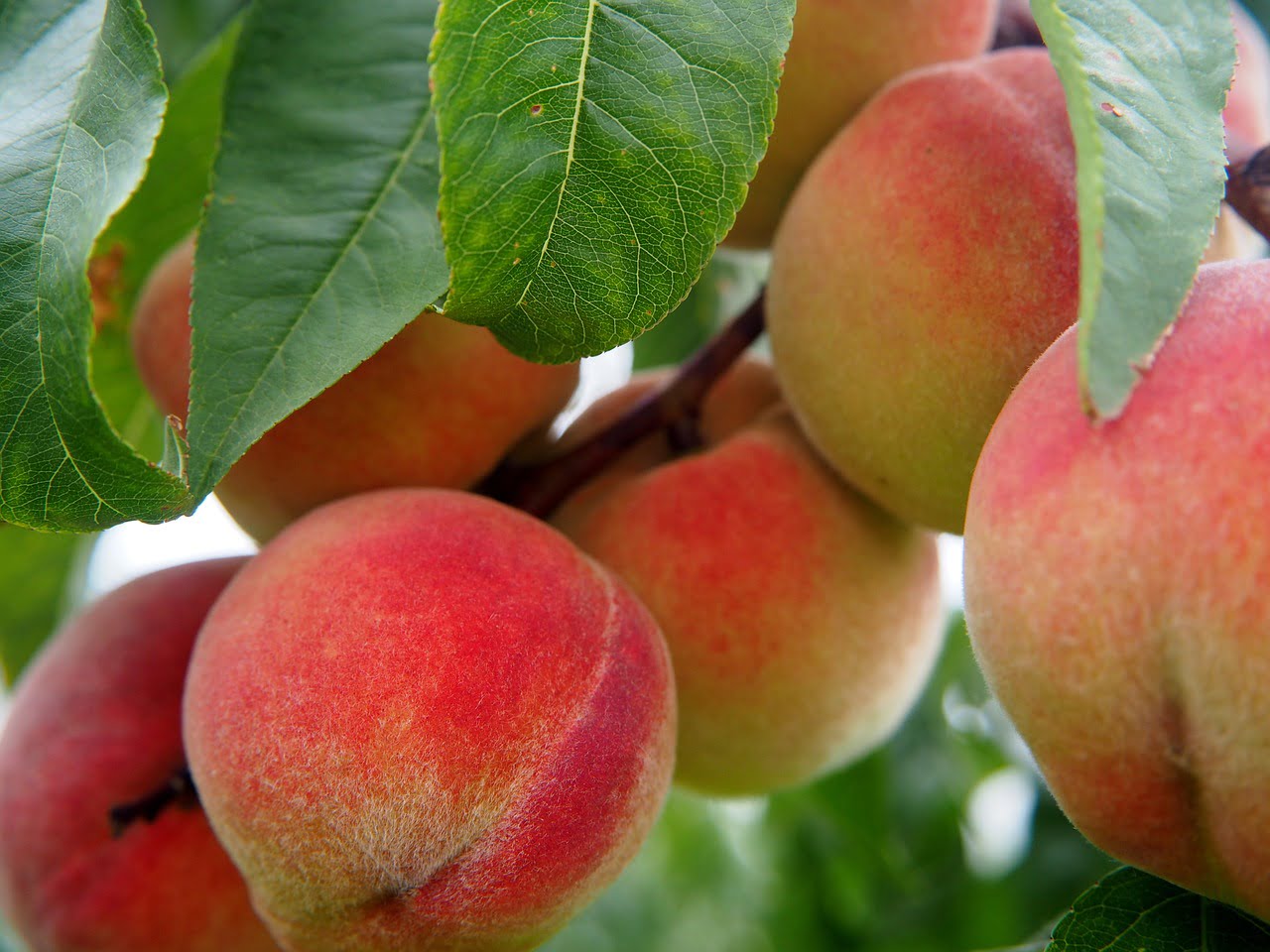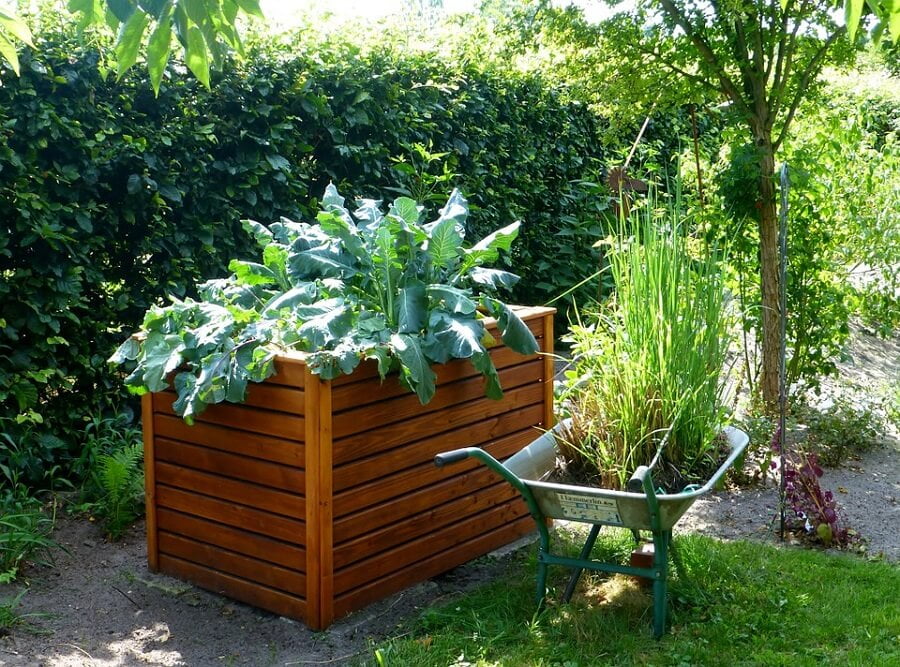Are you looking for a simple way to improve your health and well-being? Look no further than indoor gardening with house plants. Not only do house plants add beauty and greenery to your living space, but they also offer a multitude of benefits for your overall well-being.
Indoor gardening has become a popular trend, thanks to social media, podcasts, and online plant subscription services. But it’s more than just a passing fad. Research suggests that incorporating house plants into your indoor environment can have a positive impact on your health and well-being.
Post Summary
- House plants improve indoor air quality by reducing airborne toxins.
- Indoor gardening can help reduce stress levels and promote relaxation.
- Working with plants can improve attention, concentration, and productivity.
- House plants have therapeutic benefits and can improve well-being, especially for individuals with mental illness.
- Choosing safe indoor plant varieties is important, especially when there are children or pets in the home.
7 Benefits of Indoor Plants
| Physiological Benefits | Psychological Benefits |
|---|---|
|
|
“The presence of indoor plants can create a calming atmosphere and provide a much-needed escape from the stressors of daily life. Engaging with plants can have a profound impact on our overall well-being and help us find moments of tranquility amidst the chaos.”
When it comes to incorporating indoor plants for stress reduction, the options are vast. From low-maintenance succulents and cacti to leafy tropical plants, there is a wide range of choices to suit any space and personal preference. Whether you have a green thumb or are a beginner in the world of indoor gardening, taking the time to care for and nurture your plants can offer a sense of fulfillment and provide a sanctuary of calm in your home or workplace.
By integrating indoor plants into your environment, you can create a soothing oasis that not only enhances the aesthetics of your space but also contributes to your overall well-being. So, why not bring a touch of greenery indoors and experience the stress-reducing benefits that indoor plants have to offer?
Indoor Plants and Attention
If you’re looking to improve your attention and concentration, incorporating indoor plants into your environment can be a game-changer. Research has shown that exposure to indoor plants can have a positive impact on cognitive function, particularly when it comes to tasks that require focused attention.
A study conducted in classrooms found that students who studied in a room with real plants outperformed their peers on tests for selective attention. The presence of plants in the learning environment seemed to enhance their ability to maintain focus and stay engaged in their work.
So why do indoor plants have this effect on attention? One theory is that the presence of greenery can provide a sense of calm and relaxation, reducing mental fatigue and allowing for improved concentration. Additionally, the natural elements of plants may help create a more soothing and aesthetically pleasing environment, which can contribute to increased productivity and focus.
Incorporating indoor plants into your workspace or study area can be a simple yet effective way to optimize your attention and concentration. Consider adding a desk plant or placing potted plants strategically around your workspace to create a visually engaging and stimulating environment.
Therapeutic Benefits of Plants
Indoor gardening and horticultural therapy have gained recognition for their therapeutic benefits, particularly in individuals with mental illness. Research shows that working with plants can have a positive impact on well-being, reducing depressive moods and alleviating symptoms of anxiety.
Horticultural therapy, which involves engaging in gardening activities under the guidance of a trained therapist, has shown promising results in improving mental health outcomes. It offers individuals a sense of purpose, accomplishment, and connection with nature, leading to increased feelings of well-being.
A study conducted at a psychiatric hospital found that patients who participated in horticultural therapy experienced reduced stress levels, improved mood, and increased self-esteem. The nurturing aspect of caring for plants and witnessing their growth can provide a sense of responsibility and a distraction from negative thoughts.
“Working with plants can increase feelings of well-being, decrease depressive moods, and alleviate symptoms of anxiety.”
What is Horticultural Therapy?
Horticultural therapy is a form of therapy that utilizes plants and gardening as a means of improving physical, mental, and emotional well-being. It is often used as a complementary therapy for individuals with mental illness, as it provides a non-threatening and engaging environment for self-expression and personal growth.
Through horticultural therapy, individuals have the opportunity to learn new skills, build self-confidence, and develop a sense of accomplishment. The sensory experiences of gardening, such as touching soil, smelling flowers, and observing the growth of plants, can be calming and soothing, offering a welcome respite from the stressors of daily life.
Incorporating plants into therapeutic settings, such as hospitals, nursing homes, and rehabilitation centers, has been shown to enhance the overall well-being of patients and improve their quality of life. It provides a natural and accessible form of therapy that can be adapted to meet the unique needs of each individual.
Plants and Faster Recovery
When it comes to recovery from illness, injury, or surgery, the presence of plants can have a positive impact. Studies have shown that patients who have access to plants or trees during their recovery process experience improved clinical outcomes.
In fact, patients who have a view of plants or natural scenery from their hospital rooms have been found to have reduced need for pain medication and shorter hospital stays. This suggests that simply looking at plants and natural elements can contribute to a faster recovery.
Research has also found that exposure to nature can have a calming effect on patients, helping to reduce anxiety and promote a sense of well-being. This not only benefits the emotional state of patients but also plays a role in their physical recovery.
Overall, incorporating plants into healthcare settings and recovery environments can provide a range of benefits, including faster recovery, improved well-being, and enhanced clinical outcomes. The presence of plants offers a connection to nature, which has been shown to have a positive impact on both physical and mental health.
The image above showcases the positive impact of plants on the recovery process, reinforcing the idea that nature has the power to expedite healing.
Plants and Productivity
Having plants in the workspace can significantly increase productivity and creativity. According to studies, students and employees perform better and experience less stress when plants are present nearby. The presence of plants in the office has been shown to have a positive impact on mood, job satisfaction, and overall well-being.
Research conducted by the University of Exeter found that employees in offices with plants were 15% more productive compared to those without plants. Additionally, the study revealed that the introduction of greenery in the workplace improved air quality and reduced symptoms of sick building syndrome, leading to fewer sick days taken by employees.
A study published in the Journal of Experimental Psychology found that plants in the office can increase focus and attention span. Employees working in environments with greenery demonstrated better concentration and were able to sustain attention for longer periods. This is particularly beneficial in tasks that require cognitive effort and complex problem-solving.
“Including plants in the workspace can have a significant impact on employee well-being and productivity. The introduction of greenery not only enhances the physical environment but also creates a sense of connection with nature, which has been shown to reduce stress and increase job satisfaction.”
Incorporating plants into the office space can be done in various ways, such as placing potted plants on desks, adding vertical gardens on walls, or creating designated green areas. Employers can also consider involving employees in the selection and care of plants, fostering a sense of ownership and engagement.
| Benefit | Explanation |
|---|---|
| Increased Productivity | Studies have shown that employees working in spaces with plants are more productive, leading to better overall performance and output. |
| Improved Focus | Having plants in the workspace can enhance concentration and attention span, allowing employees to stay focused for longer periods. |
| Reduced Stress | The presence of plants has been found to reduce stress levels and create a more calm and relaxing work environment. |
Plants and Work Outlook
Incorporating natural elements, such as indoor plants, into the workplace can have a positive impact on your work outlook and overall job satisfaction. Research has shown that the presence of plants helps to reduce job stress and anxiety, creating a more pleasant and conducive work environment.
A study conducted in office settings found that employees who had plants in their workspace reported higher levels of job satisfaction and a greater sense of well-being. The presence of nature in the office not only improves mood but also enhances overall job performance and productivity.
Furthermore, the addition of indoor plants can create a connection to the natural world, which can be particularly beneficial in office environments that lack access to outdoor spaces. This connection to nature has been shown to promote a sense of calmness and tranquility, leading to increased focus and creativity.
Creating an Inviting Workspace
When incorporating indoor plants into your workspace, consider the layout and placement to maximize their impact. Strategically placing plants near workstations or communal areas can create a visually appealing and inviting atmosphere. Additionally, choosing plants with vibrant colors or interesting shapes can add a touch of visual interest to your workspace.
By introducing natural elements into your work environment, you can improve your overall work outlook and job satisfaction. The presence of indoor plants can help to reduce stress, enhance creativity, and create a more pleasant and productive workspace.
Indoor Plants and Air Quality
Indoor plants not only add beauty to your home, but they also have the potential to improve the quality of the air you breathe. Through a process called phytoremediation, certain plant species can help purify indoor air by reducing levels of volatile organic compounds (VOCs). While modern biofilters and technologies may be more efficient, incorporating indoor plants can still contribute to a cleaner and healthier environment.
Phytoremediation is the ability of plants to absorb pollutants from the air through their leaves and roots. This natural process helps remove harmful chemicals and toxins, such as benzene, formaldehyde, and trichloroethylene, which are commonly found in indoor spaces due to furniture, cleaning products, and building materials.
Specific plant species have been shown to be effective air purifiers. For example, the Areca Palm (Dypsis lutescens) and Boston Fern (Nephrolepis exaltata) are known for their air-cleansing properties. These plants have large foliage and high transpiration rates, allowing them to efficiently absorb pollutants and release oxygen into the air. Incorporating these plants into your indoor space can help improve indoor air quality and create a healthier living environment.
| Plant Species | Air Purification Abilities |
|---|---|
| Areca Palm (Dypsis lutescens) | Efficiently removes benzene, formaldehyde, and trichloroethylene |
| Boston Fern (Nephrolepis exaltata) | Effective in reducing airborne pollutants and increasing humidity |
It’s important to note that while indoor plants can help improve indoor air quality, their impact may be limited in larger spaces or areas with high levels of pollution. Additionally, it’s crucial to choose plants that are safe for children and pets, as some indoor plants can be toxic if ingested.
By incorporating indoor plants and making informed plant choices, you can enhance the air quality in your home and create a healthier environment for you and your family.
Choose Safe Indoor Plants
When selecting indoor plants for your home, it’s important to prioritize the safety of your children and pets. While plants can bring beauty and life to indoor spaces, certain varieties can be harmful when ingested. To ensure a safe environment, it’s crucial to be aware of toxic plants and take the necessary precautions.
One way to identify safe indoor plants is by consulting reliable sources such as state extension services and poison control offices. These organizations provide comprehensive lists of toxic plants specific to your region, helping you make informed choices. Additionally, you can seek guidance from local plant nurseries and experts who can recommend non-toxic options.
Common indoor plants that are considered toxic include amaryllis, English ivy, and dieffenbachia. These plants can cause symptoms such as nausea, vomiting, and skin irritation when consumed or touched. By avoiding these varieties and opting for non-toxic options, you can provide a safer environment for your loved ones.
Child and Pet-Safe Indoor Plants
| Plant Name | Scientific Name |
|---|---|
| Spider Plant | Chlorophytum comosum |
| Areca Palm | Dypsis lutescens |
| Boston Fern | Nephrolepis exaltata |
| Parlor Palm | Chamaedorea elegans |
These are just a few examples of child and pet-safe indoor plants. Remember to always research and verify the safety of any new plant you bring into your home. By exercising caution and choosing non-toxic varieties, you can create a beautiful and safe indoor oasis that contributes to the well-being of your entire family.
Conclusion
Houseplants offer a multitude of benefits for your health and well-being. Incorporating indoor gardening into your living space can create a happier and healthier environment.
Indoor plants have been shown to reduce stress levels, sharpen attention, and provide therapeutic effects for mental illness. They can also contribute to faster recovery from illness, injury, or surgery and boost productivity in the workplace.
In addition, indoor plants have the potential to improve your work outlook, leading to increased job satisfaction. They can also help improve indoor air quality by reducing airborne pollutants.
When choosing indoor plants, it’s important to consider the safety of your children and pets. Some plants can be toxic, so be sure to check reliable sources for a list of safe plant varieties.
Overall, indoor gardening and the presence of houseplants can greatly enhance your well-being, making your home a more enjoyable and healthier place to be.
Do House Plants and Moss Indoors Provide Similar Benefits?
House plants and moss indoors provide similar benefits for home environments. Both help improve air quality by reducing toxins and releasing oxygen. Additionally, the amazing benefits of growing moss indoors include its ability to absorb and retain moisture, creating a healthier atmosphere.
FAQ
What are the benefits of having house plants?
House plants offer numerous benefits for health and well-being, including stress reduction, improved attention, therapeutic effects, faster recovery, increased productivity, improved work outlook, and potential improvement of indoor air quality.
How do house plants help reduce stress?
Working with indoor plants can reduce physiological and psychological stress, leading to feelings of comfort and relaxation. This is supported by the decrease in heart rate and blood pressure observed in participants.
Can indoor plants improve attention and concentration?
Yes, exposure to indoor plants has been shown to improve attention and concentration. Students who studied in a classroom with real plants performed better on tests for selective attention compared to those without plants.
Are there therapeutic benefits of working with plants?
Yes, indoor gardening and horticultural therapy have been used to improve well-being in individuals with mental illness. Research shows that working with plants can increase feelings of well-being, decrease depressive moods, and alleviate symptoms of anxiety.
Do plants contribute to faster recovery from illness or injury?
Yes, looking at plants and natural scenery can contribute to faster recovery from illness, injury, or surgery. Studies have shown that patients with access to plants or trees have better clinical outcomes, including reduced need for pain medication and shorter hospital stays.
Can having plants in the workspace increase productivity?
Yes, having plants in the workspace has been found to increase productivity and creativity. Studies have shown that students and employees perform better and are less stressed when there are plants nearby.
Do plants improve job satisfaction?
Yes, natural elements in the workplace, such as indoor plants, have been found to improve job satisfaction and commitment to the organization. The presence of plants helps to reduce job stress and anxiety, leading to a more positive outlook on work.
Can indoor plants improve indoor air quality?
Yes, plants have the ability to improve indoor air quality through a process called phytoremediation. They can reduce airborne volatile organic compounds (VOCs), although modern biofilters and technologies may be more efficient. Specific plant species, such as areca palms and Boston ferns, have been shown to be effective air purifiers.
Are all indoor plants safe for children and pets?
No, it’s important to choose indoor plant varieties that are safe for children and pets. Some common plants, like amaryllis and English ivy, can be toxic. It’s recommended to check reliable sources, such as state extension services and poison control offices, for a list of toxic plants in your region.












